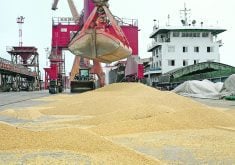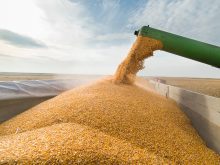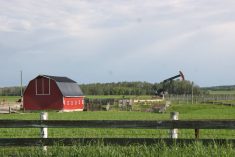Statistics Canada’s October hog inventory report shows Western Canada’s industry continues to grow, in contrast to the trend in the rest of the continent.
But Canada is not realizing the full economic benefit from this expansion, as an increasing number of the weanlings are exported to the United States.
Despite months of profitability, hog producers in the U.S. are leery about expansion. The debilitating losses of 1998-1999 still weigh on the balance sheets.
And community concerns about the environmental impact of intensive livestock production are also holding back expansion elsewhere.
Read Also

Trump’s tariffs take their toll on U.S. producers
U.S. farmers say Trump’s tariffs have been devastating for growers in that country.
The result is that the U.S. herd is shrinking and Eastern Canada’s is growing slowly.
But in Western Canada, particularly Manitoba and Saskatchewan, rapid expansion is the order of the day.
Let’s look at some of the numbers.
On Oct. 1 there were 5.03 million hogs in Western Canada, an increase of 4.4 percent over the same time last year.
In contrast, Eastern Canada had 7.14 million hogs, a decrease of 3.5 percent. However, the inventory in the East was partially a reflection of the large number of small hogs exported to the U.S. for finishing.
The number of sows and bred gilts in the West rose 6.6 percent. In Eastern Canada the number rose 2.2 percent and in the U.S. it declined one percent.
The statistical report was a milestone for Saskatchewan, marking its largest total hog herd since the Second World War.
Year over year, Saskatchewan’s breeding herd showed the largest percentage increase in the country, growing by 10.2 percent.
And it appears optimism is not waning.
In the third quarter, Saskatchewan increased the number of sows farrowed by 21 percent compared to the national average of 5.6 percent. But while fast growing, the province remains a second string player.
Quebec is still the No. 1 hog producer, followed by Ontario.
Fast growing Manitoba remains in third spot, followed by Alberta and then Saskatchewan.
As mentioned, there are strong exports of feeder pigs to the U.S.
In the first three quarters, exports of live hogs are up 19 percent, almost all from Ontario and Manitoba.
By not finishing and slaughtering these animals at home, Canada is losing several hundred million dollars in value-added revenue.














